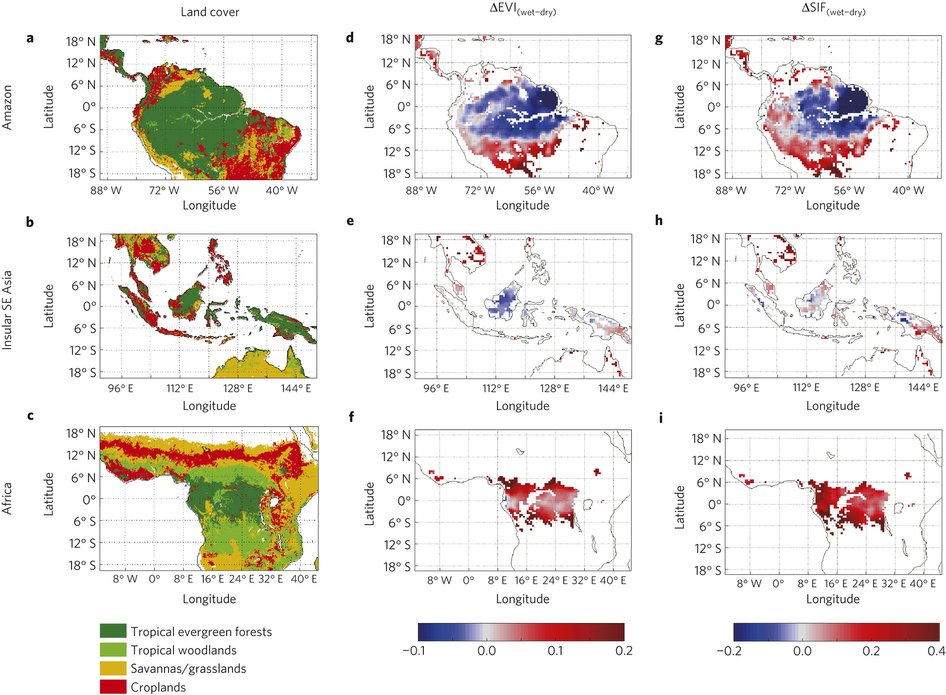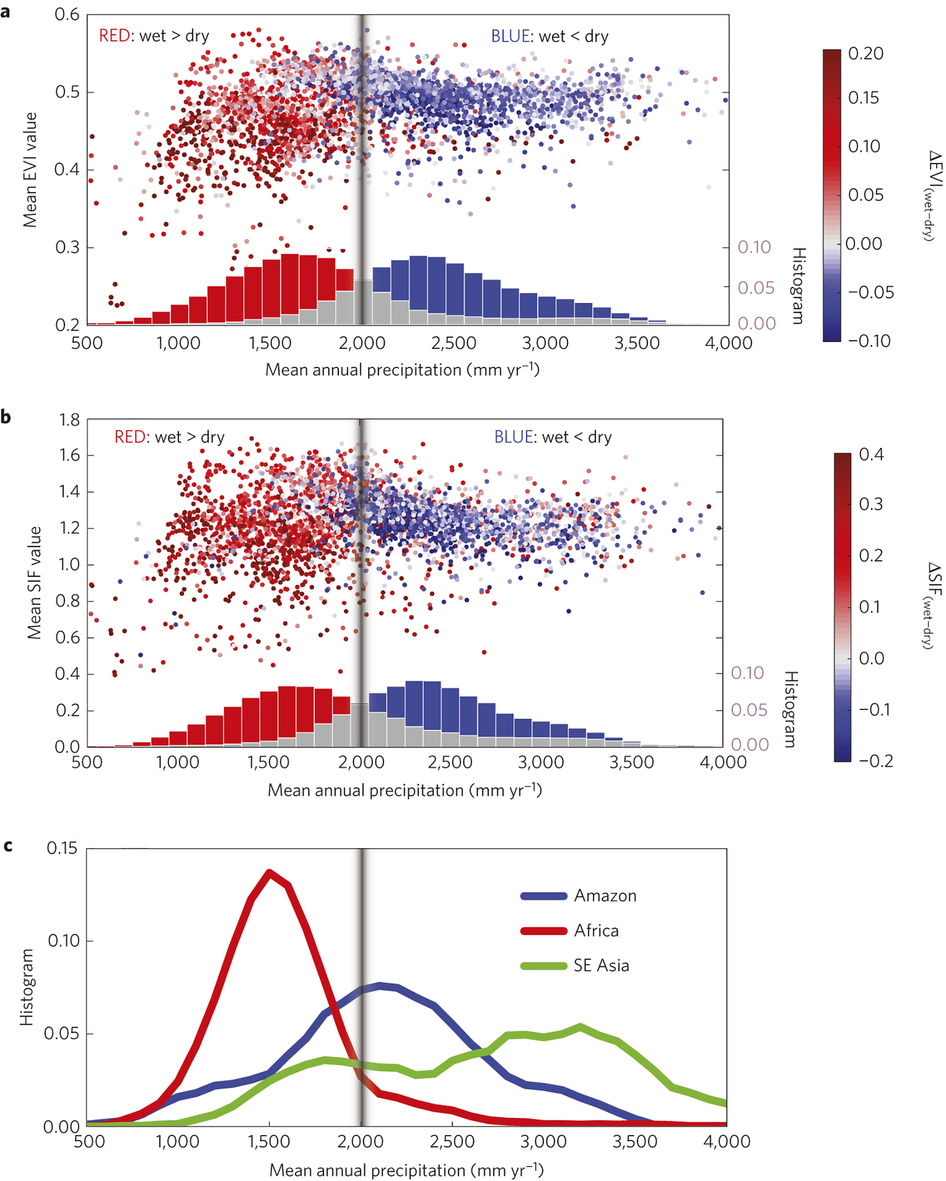Researchers at the University of Montana, Princeton University, Stanford University, and Rutgers University, among others, are collecting new measurements of tropical forests to gain a better understanding of how they respond to seasonal climate variations. The following News Report from the University of Montana, posted March 9, 2015 with the title above, goes on to state:
The new information helps predict how the global tropics may react to future climate change. These findings are detailed in a paper titled “Photosynthetic seasonality of global tropical forests constrained by hydroclimate,” which was http://www.nature.com/ngeo/journal/vaop/ncurrent/full/ngeo2382.html published in Nature Geoscience this month. “A better understanding of tropical forest behavior is needed because tropical forests serve as the lungs of the Earth,” said UM Professor John Kimball, a contributor to the study. “Tropical forests breathe in carbon dioxide – a potent greenhouse gas – and store it as vegetation biomass through photosynthesis.”
According to Kimball, carbon storage is a critical ecosystem service that’s vulnerable to human impacts from deforestation and climate change. Because of this, monitoring and measuring its seasonal changes is key to predicting how much of the global tropics are potentially vulnerable or resilient to drought and future climate change.
The researchers took a different approach to monitoring the forest canopy structure and groundwater storage by using multiple satellite sensors, including measurements at longer microwave frequencies and gravimetric measurements. Kimball said these longer wavelength measurements are much more accurate because they can “see” through the clouds and atmosphere – typically dense above the tropics, obscuring the view from space – but they are still sensitive to changes in vegetation on the land and water storage beneath.
The researchers’ findings show that there’s a distinctive rainfall threshold that explains spatial differences in vegetation seasonality across the global tropics. Above the threshold, tropical vegetation essentially is evergreen, where its productivity responds mainly to seasonal changes in cloud cover and sunlight. Below the threshold, the vegetation productivity is constrained by limited water supplies needed to sustain its growth during the dry season.
“There is a debate as to whether the tropics have seasonality,” Kimball said. “Our findings show that there’s a distinctive seasonal pulse in these forests that’s defined by the amount of annual rainfall. We are still learning more about it, but this new understanding will help inform global climate models and make better predictions.”
Kimball also is among a team of researchers that recently launched a NASA satellite called the Soil Moisture Active Passive, or SMAP, mission that will peer into the topmost layer of Earth’s soils to measure the hidden waters that influence our ecosystem’s weather and climate. He developed the science algorithms and software that will use the data collected from SMAP to estimate land-atmosphere carbon exchange, ecosystem productivity and underlying environmental controls.
Editor’s note: Many thanks to Professor Leila Carvalho for suggesting this material.




